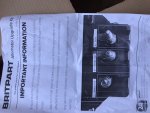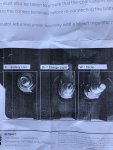MountainD
Technical Excellence Contributor
The battery light is not coming on when I turn the ignition to the on position and nor when I start the 1991 D110 (200TDI if that matters). I get how they work, so here is what I have checked.
The bulb is known good. With ignition off, both sides (bulb removed) have continuity to ground. With ignition on ACC (not running) I check the pad where the bulb makes contact and on one side of the pad, I am getting 12V , but I am also getting 10V on the other side of the pad (which is why the light isn't coming on at ACC)??? Shouldn't it be grounded on the other side with the ignition just on ACC but not running? I swapped alternators with a new one and I am having the same issue. When running, sometimes I am getting charge but most the time I am under 12V and draining. Something is going on. This was with two different alternators, one brand new.
I'll trace the wires, but goodness sakes, there are only three wires. Any clue what may be going on?
The bulb is known good. With ignition off, both sides (bulb removed) have continuity to ground. With ignition on ACC (not running) I check the pad where the bulb makes contact and on one side of the pad, I am getting 12V , but I am also getting 10V on the other side of the pad (which is why the light isn't coming on at ACC)??? Shouldn't it be grounded on the other side with the ignition just on ACC but not running? I swapped alternators with a new one and I am having the same issue. When running, sometimes I am getting charge but most the time I am under 12V and draining. Something is going on. This was with two different alternators, one brand new.
I'll trace the wires, but goodness sakes, there are only three wires. Any clue what may be going on?

